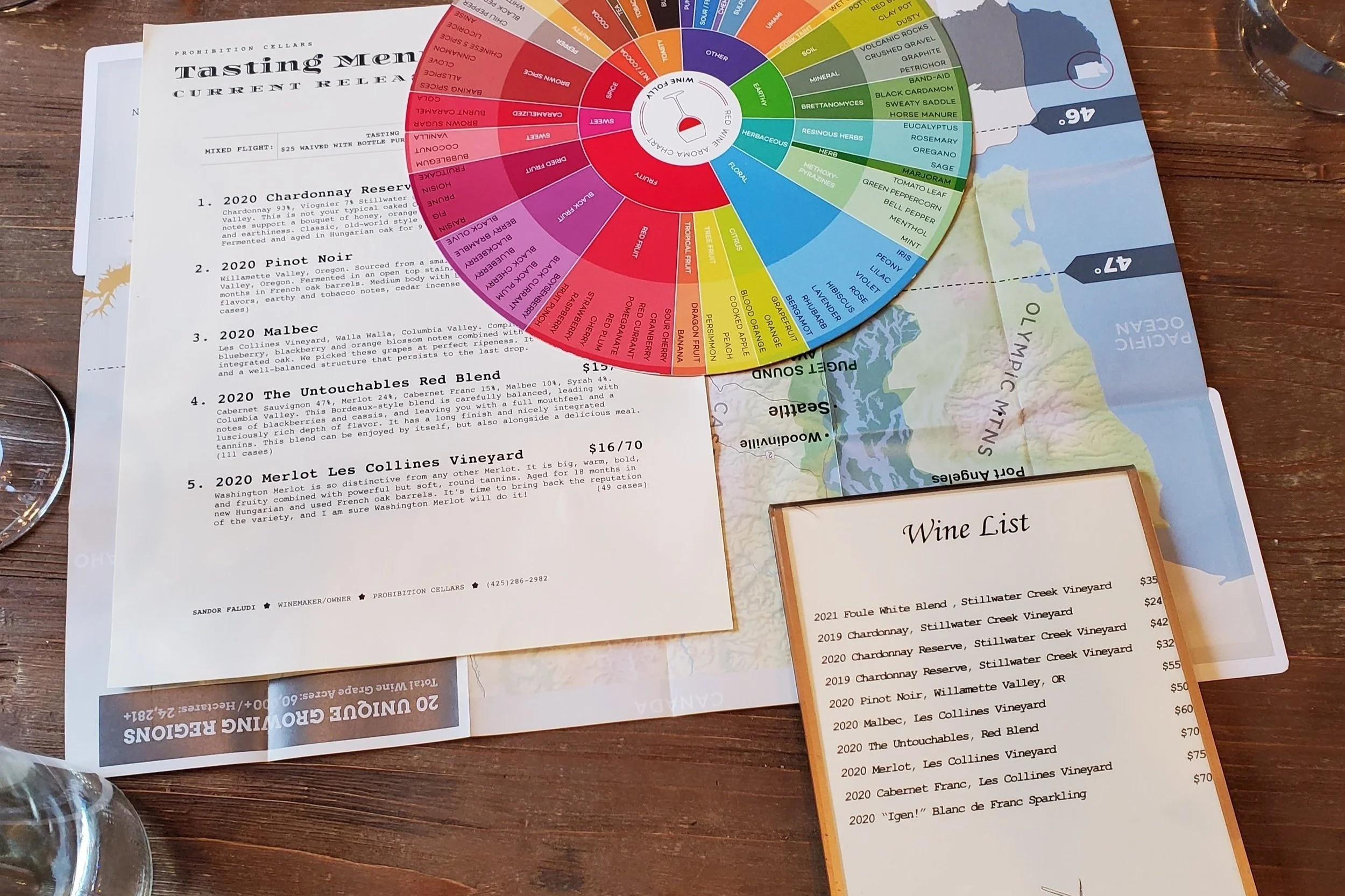Prohibition Cellars
KNOW BEFORE YOU GO
LOCATION : Warehouse District
HOURS (as of March 2023): Fri 12-6pm, Sat/Sun 12-5pm, closed Mon-Thurs
TASTING FEE (as of March 2023): $25 (mixed flight)
As part of an initiative to broaden my offering of Warehouse District tours, I recently took a foray into that neighborhood to discover what’s new. Prohibition Cellars had been recommended to me (sort of - a guest at another tasting room had informed me they were a member there, but warned that they wanted Prohibition to remain small and secret… oops). Spoiler alert: my high expectations were fulfilled.
Prohibition’s winemaker, Sandor Faludi, was born and raised in Hungary to a family with wine in its blood. After learning the craft in the Old World, Sandor and his wife Sabrina (co-owner of the brand) moved to the west coast of the United States and opened a small winery in their garage. The name “Prohibition” refers to the way neighbors and friends came and went from the tiny garage facility, lending the place the mystique of a speakeasy. On January 16th, 2020 (100 years to the day after the rollout of America’s “great experiment” of prohibition) the tasting room opened its doors in Woodinville’s warehouse district.
I threw out the term “Old World” earlier; this refers to Europe, while the “New World” comprises the Americas, Australia, South Africa, New Zealand - basically, everywhere else. Old World winemaking has its own unique philosophy, often tied deeply with the concept of “terroir” (or “sense of place”); in the Old World, the winemaker’s job is to get out of the way of the natural process of fermentation, and that holds true at Prohibition. No acid, tannin or water is added to the wine to manipulate its flavor, so the character of the grapes that go into the tank is reflected in the finished product that comes out.
Prohibition also hearkens back to the Old World by making use of Hungarian oak in some of its barreling. This raised my eyebrows - I don’t know of anyone else in Woodinville using Hungarian oak - and it’s worth a brief tangent into the importance of oak in winemaking.
There are three primary varieties of oak used in the wine barrel-aging process that most reds (and more than a few fine whites) go through. French oak is a fine-grain species used to age many of the most expensive bottles on the market, and often imparts flavors of baking spice, crème brûlée and coffee in the finished wine. American oak tends to have a looser grain structure and imparts more flavor overall into the finished product, including notes of coconut, vanilla and even sometimes marshmallow. Hungarian (sometimes marketed as “Eastern European”) oak is a tricky one; while it’s technically the same species as French oak, it’s grown in a different biome and produces a richer, nuttier flavor that happily marries to fuller-flavored varietals like Malbec and Petit Verdot. Hungarian oak, though generally less expensive than French, can be harder to come by, and certainly stands out in the Woodinville wine country ouvre.
Back to Prohibition.
The tasting room décor (brought to life by Sabrina) capitalizes heavily on the brand’s theme, from the oil painting of Al Capone to the hidden door that leads to the back room production facility. Bottles range in price from $24-70 and include such standouts as a Willamette Valley Pinot Noir and a sparkling white of Cabernet Franc. At the time of my last tasting the favorite of the group was Prohibition’s Merlot from Les Collines vineyard, which showed all the rich blueberry and herbal bouquet I love to see in a Washington Merlot.
Reservations are recommended at this small tasting room, and an outdoor patio can accommodate animals in the summer. If you’d like to visit this hidden gem of a winery, let us know in your pre-tour survey and we will make sure not to miss it.
Salut, and enjoy Woodinville!

